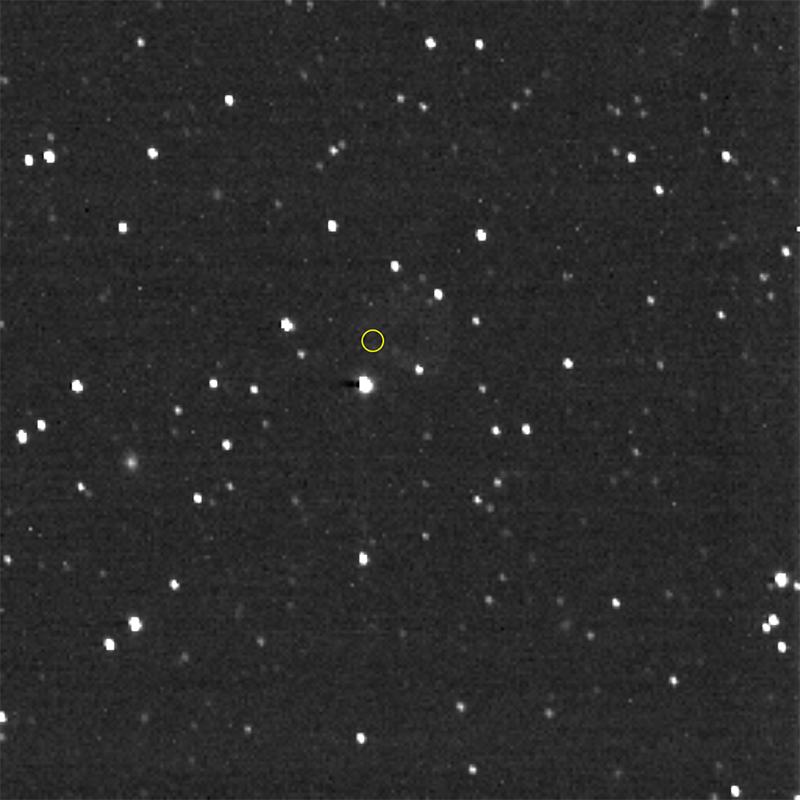News
New Horizons Reaches a Rare Space Milestone
Now 50 times as far from the Sun as Earth, history-making Pluto explorer photographs Voyager 1's location from the Kuiper Belt
In the weeks following its launch in early 2006, when NASA’s New Horizons was still close to home, it took just minutes for the operations team at the Johns Hopkins Applied Physics Laboratory (APL) to transmit a command to the spacecraft and hear back that the onboard computer received and was ready to carry out the instructions.
As New Horizons crossed the solar system, and its distance from Earth jumped from millions to billions of miles, that time between contacts grew from a few minutes to several hours. And on April 17 at 12:42 UTC (8:42 a.m. EDT), New Horizons will reach a rare deep-space milepost — 50 astronomical units from the Sun, or 50 times farther from the Sun than Earth is.
Scale of the Solar System
Here’s one way to imagine just how far 50 AU is: Think of the solar system laid out on a neighborhood street; the Sun is one house to the left of “home” (or Earth), Mars would be the next house to the right, and Jupiter would be just four houses to the right. New Horizons would be 50 houses down the street, 17 houses beyond Pluto!
New Horizons is just the fifth spacecraft to reach this great distance, following the legendary Voyagers 1 and 2 and their predecessors, Pioneers 10 and 11. New Horizons is almost 5 billion miles (7.5 billion kilometers) away, in a remote region where one of those radioed commands — even traveling at the speed of light — now needs seven hours to reach the far-flung spacecraft and seven more hours before its control team on Earth finds out if the message was received.
“It’s hard to imagine something so far away,” said Alice Bowman, the New Horizons mission operations manager at APL, in Laurel, Maryland. “One thing that makes this distance tangible is how long it takes for us on Earth to confirm that the spacecraft received our instructions. This went from almost instantaneous to now being on the order of 14 hours. It makes the extreme distance real.”
To mark the occasion, New Horizons recently photographed the star field where one of its long-distance cousins, Voyager 1, appears from New Horizons’ unique perch in the Kuiper Belt. Never before has a spacecraft in the Kuiper Belt photographed the location of an even more distant spacecraft, now in interstellar space. Although Voyager 1 is far too faint to be seen directly in the image, its location is known precisely due to NASA’s radio tracking.
“That’s a hauntingly beautiful image to me,” said Alan Stern, New Horizons principal investigator from the Southwest Research Institute in Boulder, Colorado.
“Looking back at the flight of New Horizons from Earth to 50 AU almost seems in some way like a dream,” he continued. “Flying a spacecraft across our entire solar system to explore Pluto and the Kuiper Belt had never been done before New Horizons. Most of us on the team have been a part of this mission since it was just an idea, and during that time our kids have grown up, and our parents, and we ourselves, have grown older. But most importantly, we made many scientific discoveries, inspired countless STEM careers, and even made a little history.”

